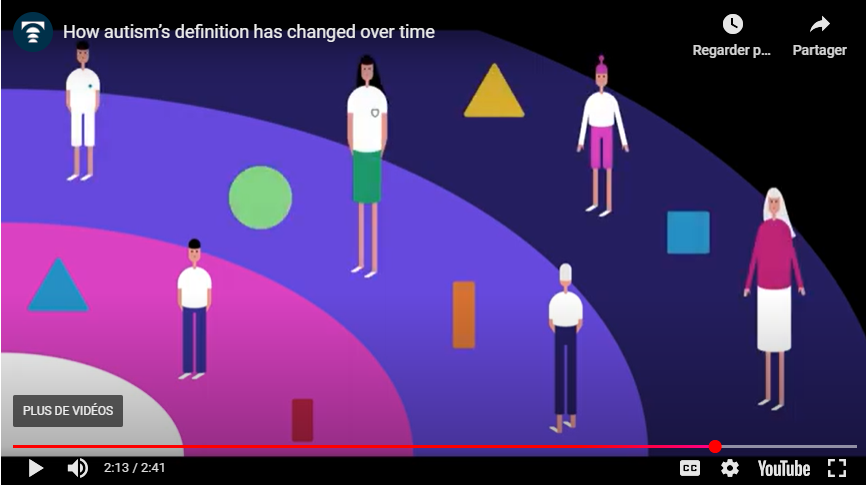Did you know that about 1 in 45 adults in the U.S. have autism spectrum disorder (ASD)? Yet, many don’t get diagnosed. Spotting autism in adults is tough because their symptoms are different from those in kids.
It’s key to know the signs of autism in adults for personal growth and getting help. Symptoms can be small, like trouble talking, or big, like hard social interactions that affect daily life.
If you think you or someone you know might have adult autism, looking into these signs is a good start. To spot autism in adults, watch how they act, talk, and interact with others.
Table of Contents
Key Takeaways
- Autism in adults often goes undiagnosed
- Symptoms can vary widely between individuals
- Professional assessment is critical for understanding
- Early recognition can lead to better support strategies
- Many adults with autism develop effective coping mechanisms
Understanding Adult Autism Spectrum Disorder
Autism spectrum disorder (ASD) is a complex condition that affects people differently as they grow. Many think of autism as a childhood issue, but it also affects adults in unique ways. These challenges are often overlooked.
Understanding ASD in adults is complex. It’s different from childhood autism. Adult autism is often subtle and deeply part of a person’s life and personality.
What Defines Adult ASD?
Adult ASD is marked by several key challenges:
- Social communication difficulties
- Restricted or repetitive behavior patterns
- Unique sensory processing experiences
- Specific intense interests or expertise
Unique Presentation in Adults
Adults with autism often develop adaptive strategies to hide their challenges. These strategies can make diagnosis harder. People learn to interact socially through learned behaviors, not natural instinct.
Addressing Autism Misconceptions
Many myths surround adult ASD. Autism is not just for kids. Many are diagnosed as adults, facing lifelong challenges that are often misunderstood.
Autism is a spectrum, not a linear condition. Each individual’s experience is unique and multifaceted.
Grasping these complexities helps us better understand adult autism. It leads to more compassion and support for those living with this complex condition.
Historical Overview of Autism Diagnosis in Adults

The history of autism diagnosis has seen big changes over the years. In the early days, autism was seen as a childhood issue. This left many adults without support or recognition. The journey to recognizing adult autism started with groundbreaking research that changed how we see it.
Important milestones in autism diagnosis include:
- 1940s: Leo Kanner first described autism as a distinct psychological condition
- 1980s: Diagnostic criteria expanded to recognize broader autism spectrum
- 1990s: Growing awareness of autism in adults emerged
- 2013: DSM-5 introduced more detailed diagnostic framework
Understanding adult autism means seeing how diagnosis has changed. In the past, doctors only looked at children. This missed how autism shows up in adults. Many people were not recognized or supported because of this.
| Decade | Diagnostic Understanding | Impact on Adult Recognition |
|---|---|---|
| 1940-1970 | Childhood-focused diagnosis | Minimal adult recognition |
| 1980-2000 | Expanding spectrum awareness | Initial adult diagnostic considerations |
| 2000-Present | Comprehensive diagnostic criteria | Increased adult autism understanding |
Now, experts see autism as a lifelong condition. The modern approach focuses on individual experiences and supports detailed assessments at all ages. This change has helped many adults understand themselves and find the right help.
Social Communication and Interaction Challenges
Adults with autism spectrum disorder face big hurdles in social interactions. These challenges can deeply affect their personal and work lives. They create barriers in communication that others might not see right away.
For those with autism, social interactions are very hard to handle. They struggle with nonverbal communication, making it tough to grasp social clues.
Difficulty with Nonverbal Communication
Nonverbal cues are key in human interaction. Many adults with autism find it hard to read these cues. This includes:
- Difficulty reading facial expressions
- Misinterpreting body language
- Struggling to maintain appropriate eye contact
- Missing subtle social hints
Challenges in Maintaining Relationships
Autism can make it hard to keep relationships strong. It’s tough for many to understand social norms.
| Relationship Challenge | Potential Impact |
|---|---|
| Difficulty with emotional reciprocity | Misunderstandings in personal interactions |
| Challenges in understanding social cues | Potential isolation or misinterpreted intentions |
| Limited perspective-taking skills | Struggles in empathetic communication |
Problems with Social Reciprocity
Social reciprocity means giving and taking in conversations. For adults with autism, this is a big challenge. They may struggle to have balanced talks or grasp social rules that seem easy to others.
“Understanding social interactions is like learning a complex language without a dictionary.” – Autism Communication Specialist
Seeing these challenges is the first step to better communication and connections.
Behavioral Patterns and Restricted Interests

Adults with autism have their own special ways of behaving. They often show repetitive actions and have strong interests in certain things. These interests can take up a lot of their time every day.
Restricted interests in autism mean a deep focus on specific topics or activities. You might see someone who:
- Knows a lot about a certain subject
- Spends a lot of time collecting or organizing items related to their interest
- Is very dedicated to learning all about their favorite topic
Repetitive behaviors in adults with autism include routines or actions that make them feel safe and in control. These might include:
- Following a strict daily schedule
- Having specific ways of moving
- Doing certain rituals when they do personal tasks
It’s important to understand these behaviors to support adults with autism spectrum disorder. Even though these traits might seem different, they are important ways for people with autism to cope and find happiness.
Each person’s experience with autism is unique, and behavioral patterns can vary widely across the spectrum.
Signs of Autism in Adults: Key Indicators to Watch For
Spotting autism in adults is tricky. The signs are different from those seen in kids. Knowing these signs is key for early help.
Adults with autism face special challenges every day. Spotting these signs needs careful watching and understanding of small behaviors.
Emotional Expression and Recognition
People with autism find it hard to talk about feelings. You might see:
- Struggling to get what others feel
- Hard time saying how they feel
- Not showing much on their face or sounding the same
“Understanding emotional nuances can be like solving a complex puzzle for adults with autism.” – Dr. Temple Grandin
Sensory Processing Issues
Sensory problems in autism can really affect daily life. These might include:
| Sensory Domain | Potential Challenges |
|---|---|
| Auditory | Hypersensitivity to certain sounds |
| Visual | Too much visual stuff |
| Tactile | Not liking certain textures |
Executive Functioning Challenges
Adults with autism might find it hard with:
- Managing time
- Keeping things organized
- Planning big tasks
- Dealing with sudden changes
Spotting these signs can help people get the right support and find ways to cope.
Impact on Daily Life and Relationships
Living with autism as an adult comes with its own set of challenges. It affects many areas of life, not just social interactions. It impacts personal relationships, work environments, and how we see ourselves.
Adults with autism face unique hurdles in social situations. They often struggle with communication, making relationships complex.
- Work environments may require specific adaptations
- Social interactions demand increased mental energy
- Sensory processing differences influence daily experiences
Romantic relationships can be tough for several reasons. They include:
- Difficulty reading nonverbal communication cues
- Struggles with emotional reciprocity
- Potential challenges in understanding unspoken social expectations
Workplaces can also be challenging for adults with autism. They often need to use complex social skills that are hard to learn.
| Life Domain | Potential Challenges | Potential Strategies |
|---|---|---|
| Professional | Communication barriers | Clear written instructions |
| Personal | Social misunderstandings | Explicit communication |
| Emotional | Sensory overwhelm | Structured coping mechanisms |
Understanding these dynamics can help individuals develop effective coping strategies and build supportive networks.
Professional Assessment and Diagnosis Process
Getting an autism diagnosis as an adult can be tough. Knowing how the autism assessment works helps you feel more in control. This guide will help you find the right specialists and what to expect during your journey.
Diagnostic Criteria for Adult Autism
The criteria for autism spectrum disorder (ASD) in adults cover a few main points:
- Persistent challenges in social communication and interaction
- Restricted or repetitive patterns of behavior
- Symptoms present from early developmental period
- Significant impairment in daily functioning
Finding Qualified Healthcare Providers
Finding the right autism specialists takes some effort. Here are some tips:
- Ask your primary care doctor for recommendations
- Contact local mental health clinics that focus on neurodevelopmental disorders
- Get in touch with autism support groups for professional suggestions
- Verify the credentials of psychologists or psychiatrists with ASD experience
What to Expect During Evaluation
An autism assessment is a detailed process. Be ready for a multi-step evaluation that might include:
- Detailed personal and developmental history interviews
- Standardized autism diagnostic observation tools
- Psychological and cognitive assessments
- Potential medical exams to check for other conditions
“Knowledge is the first step toward understanding yourself and accessing appropriate support.” – ASD Research Institute
Getting an autism diagnosis as an adult is a brave step. It’s a move toward understanding yourself better and getting the support you need.
Support Systems and Resources Available

Adult autism can feel overwhelming, but many support systems are here to help. Autism support for adults has grown a lot, with resources for both challenges and strengths.
Finding the right services can greatly improve your life. Here are some key support options:
- Local support groups for adults with autism
- Online communities and forums
- Professional counseling services specializing in autism
- Vocational rehabilitation programs
- Mental health workshops tailored to autism spectrum needs
Autism resources are now easier to find online. Virtual support networks offer safe places to connect with others. The Autism Society of America provides online resources, workshops, and coaching.
“Support isn’t just about managing challenges—it’s about celebrating individual strengths and strengths.” – Autism Research Expert
Professional services can help you learn life skills, improve social interactions, and boost self-confidence. Many communities offer programs in:
- Career development
- Independent living skills
- Social skills training
- Emotional regulation techniques
Seeking support is a sign of strength. Every resource you explore helps you understand yourself better and live a fulfilling life.
Coping Strategies and Self-Advocacy
Living with autism means finding ways to deal with everyday challenges. Learning effective coping strategies can greatly improve your life and confidence.
Starting with self-advocacy for autism requires knowing yourself well. Understanding your strengths and challenges helps you communicate better and find the right support.
Developing Personal Coping Mechanisms
Creating your own coping strategies is key. This includes:
- Identifying what stresses you out
- Learning to relax with deep breathing
- Setting up daily routines
- Using visual aids and organizers
“Understanding yourself is the first step to effective self-advocacy.” – Dr. Temple Grandin
Building a Support Network
A strong support network is vital for managing autism. Connect with:
- Autism support groups
- Therapists who know about autism
- Family members who get it
- Communities that welcome neurodiversity
Workplace Accommodations
At work, you need the right setup to thrive. Ask for:
- A quiet place to work
- Clear, written instructions
- Flexible ways to communicate
- A work environment that’s easy on your senses
Using these strategies helps build a supportive environment. It allows for growth and success in your career.
Treatment and Management Options
Managing autism in adulthood needs a detailed plan. It should meet each person’s specific needs and challenges. The goal is to improve life quality through therapy and support.
There are many ways to help adults with autism. These include:
- Cognitive Behavioral Therapy (CBT): Helps adults change their thought patterns
- Occupational Therapy: Teaches practical skills for daily life and work
- Social Skills Training: Enhances communication and social interactions
- Counseling: Deals with emotional issues and mental health
Medicine can also help manage autism symptoms. Treatments might include:
- Anxiety medications
- ADHD medications
- Depression treatments
Your treatment plan should be all-encompassing and tailored to you. Talking to healthcare experts can help create a plan that fits your needs and abilities.
Every individual with autism is unique, and treatment should reflect personal goals and challenges.
Technology and digital tools are now helping adults with autism. They offer new ways to learn skills and improve communication.
Conclusion
Recognizing autism signs in adults is key to better support and self-awareness. Your journey of understanding adult autism can change lives. It breaks down barriers and challenges old ideas about neurodiversity.
Every person’s experience with autism is different. They need caring and tailored approaches. This makes a big difference.
Autism awareness is more than just recognizing signs. It’s about creating places where people can be themselves. Getting a professional diagnosis helps understand your unique brain.
By finding qualified doctors and using your strengths, you can improve your life and relationships. This is a big step forward.
The journey to understand adult autism never ends. There are many resources, support groups, and experts to help. Remember, autism is not a limit but a different way of seeing the world.
Your unique view adds valuable insights to our understanding of neurodiversity. This is important for everyone.
Start your journey of self-discovery and acceptance today. Whether for yourself or someone else, keep learning and showing empathy. Autism awareness makes our communities more inclusive and respectful.
